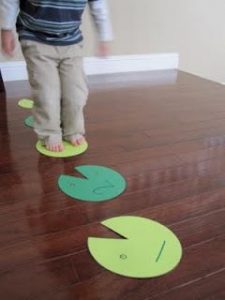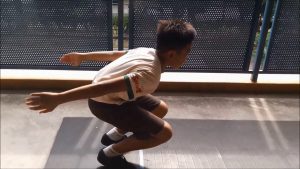The number one thing that a golfer looks for when they seek an outside professional in the fitness world is to increase their power off the tee. For those foreign to the game of golf, this is the home plate or line of scrimmage – the first shot on each hole. Tiger Woods ushered in the concept of performance training for golf, and as more and more professionals are seen training, it is becoming a normal part of the golf community. Because of this, parents are more apt to get their junior golfer involved in performance training, which represents an exceptional opportunity for the youth fitness professional.
Many children become enamored with the sport of golf as early as 3-5 years old. Many want to focus solely on the game before their 10th birthday, which means fitness professionals will need to be familiar with the concept of long-term athlete development (LTAD) in order to give them more of a multilateral approach to their development.
We must consider the needs and past experiences of a young golfer. They may be experiencing some success at a young age, but have they developed a strong foundation of balance, coordination, strength, and mobility? They will all want to increase their rotational power so that they see immediate improvements in their game. This can be tricky because you have to give them a little of what they want, so you can also give them what they need.
Here are a few examples of how I create habits to generate power with the junior golfer and tie in the IYCA LTAD Model so you can gradually progress athlete to more challenging activities, or versions of each exercise.
Keep in mind that these are just a few exercises that can be used, and none of them require equipment or weights. While traditional strength training can be beneficial for young athletes, it is wise to start with bodyweight exercises. This will allow them to develop body control and technique, and it is also a much easier way to introduce training to the parents of young golfers who may be resistant if they think you are trying to “bulk up” their children. While there are training misconceptions in all sports, the golf world is still very new to resistance training, so starting with bodyweight exercises is a great way to begin.
Ages 6-9
Game/exploration-based fitness activities:
Frog Hops:
Cueing should be limited at this age so they learn how to explore movement options, but you can say things like “get down like a frog and show me your best hop for distance” or “jump over the lily pads.” This helps them create mental images.

Here you can lay out cones or agility dots/hoops as visual reference points and call them lily pads. Here is where you need to set your perimeters and let them know they can’t jump out of the “pond.” See where they take it and allow for exploration and self-discovery. You can add an element of excitement and intensity by adding an “alligator” that chases them. This is just you running after them, but it will get them to jump faster and farther and the laughter will be contagious. We are also nurturing the concept of spatial awareness at this stage. They will be learning different movement patterns and creative movement options to solve this “movement puzzle” as they get across the pond and evade the alligator.
While simply jumping from pad to pad may not seem difficult for every child, it will improve lower body power as well as decision making (to decide which lily pad they can get to), distance perception and body control. You can challenge athletes by only jumping with one foot or spreading out the lily pads.
Ages 10-13
Cueing should still be somewhat limited for this age group, but you can definitely start to connect the dots between training and better performance on the course. Of course, you will also give enough instruction to ensure a safe training experience. Here’s an example of how you could use “golf language” to win over the attention of an elite junior golfer. It’s important for them to feel that the training is relevant to their sport and that you know a little about it.
Broad Jumps: Step 1: “We’re going to do an exercise that will help you with your strike at impact. More leg strength equals more power into your drive.” Every golfer wants a strong drive to set them up for the next shot, and they know that strong and straight equals lower scores. Step 2: “Crouch down into a deep squat like you’re looking at your target line for a putt.” Of course, you want to visually demonstrate as well due to the modes of learning. At this age, they should have a decent understanding of the squat. They’ve most likely done it in gym class or seen it done in some manner. Step 3: “Explode out the way a ball explodes off the tee down the fairway. Land in the same position you started in, and aim the body to be in the middle of the X or Crack. Soft knees and think ninja-like “set-up posture.”
down into a deep squat like you’re looking at your target line for a putt.” Of course, you want to visually demonstrate as well due to the modes of learning. At this age, they should have a decent understanding of the squat. They’ve most likely done it in gym class or seen it done in some manner. Step 3: “Explode out the way a ball explodes off the tee down the fairway. Land in the same position you started in, and aim the body to be in the middle of the X or Crack. Soft knees and think ninja-like “set-up posture.”
While this exercise is very similar to the frog hops over lily pads described above, athletes in this age group can handle a slightly greater volume of training, so more repetitions can be performed.
You can also put a challenge in front of athletes this age. Lay down a measuring tape and do a “best out of 5” or “beat your score” challenge. Challenge and reward is huge with this age group. The positive reinforcement gets them geared up to better themselves the next time they attempt the task as well. The feeling of accomplishment and a “Great Job” goes a long way. You can progress to a 3-jump or 5-jump version (3 or 5 consecutive jumps) and even into single-leg hops to add bot intensity and kinesthetic challenge. Constantly find small ways to push them just past their comfort zone in an effort to achieve slightly better performances.
Ages 14-18 years old:
In the golf world this age group is still largely considered in the “Junior” arena, but this is where training will become more intense and sport specific. Every little minor thing at this stage means the difference between Top 5-10 or Cut after the first day of tournament play, so detail is enhanced at this stage of development. What we tend to find at this age, especially at the younger side of the spectrum, is a “wonkiness” within the realm of balance. So, here is an example of taking an exercise that can be used even for the younger age groups and bringing it to the older ones.
Plyo push-up to a 2-foot and 1-foot land & stick:
Here we try cover a few areas at once. They’re beginning to develop upper body strength and with appropriate level push-ups they can really create some explosive power. Yet we still want to emphasize lowe- body power, balance and athleticism.
Start face down, straight legs, one line from head to heel on the floor. With arm at side and elbow slightly tucked at chest height, explode up as quickly as possible, and land in an athletic stance as softly as possible. Emphasize quickness and reactivity in addition to fighting to maintain balance. When the movement is mastered, progress to closing the eyes in order to challenge the athlete’s balance, proprioception and kinesthetic awareness. Start with the 2-footed landing, and eventually progress to a 1-footed landing. Start with eyes open, and move to eyes-closed.
Here you can see the “eyes-closed” version:
Here is the 1-foot eyes-closed version:
These are simple examples of explosive exercises that can be done for the junior golfer. Of course, the progression and slow build-up process that the IYCA teaches is the best approach for long-term results. While these exercises can be used for any athlete, speaking their “sport language” will help develop buy-in and enhance their perception that the program is helping them at their sport.
So as you see the exercise variation can be the same at all ages but is in the nature of the instruction and intention of the exercise where your overall results will stem from. The IYCA Model represents a build-up approach and as we know slow and steady does win the overall race to a well-structured athlete. Within universal exercises but the language of the golf world you can truly affect the development of junior golfer and the creation of their power.
 Nelson Morales is the owner of KFS Fitness & Performance in Orlando, Florida and S & C Coach for the Henry Brunton Golf Academy. He works with Junior golfers ages 4- 18 as well as players on the Pro Golf Tour Circuits.
Nelson Morales is the owner of KFS Fitness & Performance in Orlando, Florida and S & C Coach for the Henry Brunton Golf Academy. He works with Junior golfers ages 4- 18 as well as players on the Pro Golf Tour Circuits.

